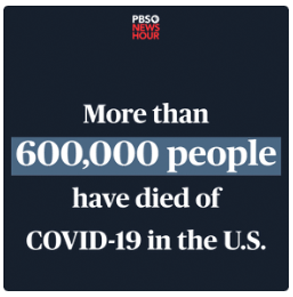Health Plan Weekly
-
News Briefs: CMS Proposes New Medicaid Network Adequacy Regs
CMS on April 27 proposed new regulations that would “establish tangible, consistent access standards” in Medicaid as well as create “a consistent way to transparently review and assess Medicaid payment rates across states.” The new policies are included in two notices of proposed rulemaking — the Ensuring Access to Medicaid Services NPRM and the Managed Care Access, Finance, and Quality NPRM. Of note for the managed care industry, the proposed regulations would create national maximum standards for certain appointment wait times for Medicaid or Children’s Health Insurance Program (CHIP) managed care enrollees, CMS said. They would also create stronger state monitoring and reporting requirements related to access and network adequacy for Medicaid or CHIP managed care plans, and require states to conduct “independent secret shopper surveys” of Medicaid or CHIP managed care plans to verify compliance with appointment wait time standards and to identify where provider directories are inaccurate. Among other provisions, the NPRMs would additionally require states to conduct annual enrollee experience surveys for each Medicaid managed care plan, and establish a framework for states to implement a Medicaid or CHIP quality rating system, which CMS calls a “one-stop-shop” for enrollees to compare Medicaid or CHIP managed care plans based on quality of care, access to providers, covered benefits and drugs, cost, and other plan performance indicators.
-
New Prison Medicaid Waiver Offers Opportunities, Challenges for MCOs
The Biden administration will make Medicaid coverage available to incarcerated people for the first time through a new category of Section 1115 waivers, building on a demonstration program that has been active in California since January. Experts tell AIS Health, a division of MMIT, that the waiver poses notable challenges to Medicaid managed care organizations, which will have to coordinate with the carceral system and community providers to meet the needs of a disproportionately vulnerable and sick population.
States that apply for the waiver, dubbed the Reentry Section 1115 Demonstration Opportunity, will provide Medicaid coverage to incarcerated people who are on the verge of returning to the community. According to an HHS press release, states will be allowed “to cover a package of pre-release services for up to 90 days prior to the individual’s expected release date that could not otherwise be covered by Medicaid.” The package of services includes providing formerly incarcerated people with a 30-day supply of medication on release, case management, and medication-assisted treatment (such as prescribing methadone) for substance use disorder (SUD).

-
In Final ACA Exchange Rule, CMS Softens Some Industry-Protested Policies
In response to industry pushback against a proposal that would have significantly limited how many non-standardized Affordable Care Act exchange plans issuers can offer, CMS in a newly finalized regulation opted for a less-restrictive approach — at least for 2024. Yet policy and actuarial experts aren’t convinced that the newly set limits are enough to solve the “choice overload” problem that’s made it increasingly hard for consumers to find ideal coverage.
With its troubled years — and mass insurance carrier exits — largely behind it, the ACA exchange market has become increasingly competitive. On the one hand, that’s good for consumers and the market at large, as research has shown competition tends to push down premiums. But the Biden administration and consumer advocates have also grown increasingly concerned that the proliferation of plan options available to insurance shoppers is making it nearly impossible to differentiate between products and choose what’s right for them. While the average ACA marketplace consumer had 25.9 plans to choose from in 2019, that number rose to 107.7 by plan year 2022, according to HHS. Research, including a 2016 RAND Corp. review of 100 studies, indicates that having too many choices can lead consumers to make poor health insurance enrollment decisions.

-
Despite Elevated Medical Costs, Elevance Posts Strong First-Quarter Results
Elevance Health, Inc. reported increased premium revenues in the first quarter of 2023 and strong results from its fast-growing PBM and services division, Carelon. While Wall Street analysts were mostly positive about the results, some expressed concerns that the firm’s medical loss ratio (MLR) and operating expenses were too high.
Elevance took in $41.9 billion during the first quarter of 2023, an increase of 10.6% year over year. Income rose 16.6% year-over-year to $2.8 billion, yielding adjusted earnings per share (EPS) of $9.46, which beat the Wall Street consensus of $9.23. Elevance’s MLR was 85.8%, which was in line with projections from the firm and the Street consensus. Days claims payable (DCP) was 46 days as of March 31, “a decrease of 1.5 days from December 31, 2022 and a decrease of 0.9 days compared to March 31, 2022,” per a press release announcing the results.

-
‘Days Claims Payable’ Dip Clouds UnitedHealth’s 1Q Earnings
Although UnitedHealth Group’s executives touted “strong and well-balanced” growth in the first quarter of 2023, the company’s stock dropped following its April 14 earnings report. Equities analysts suggested that a decline in the days claims payable (DCP) metric led to the sell-off, as well as concerns about Medicare Advantage-related business risks — but their views differ about how concerned investors should be.
SVB Securities analyst Whit Mayo, for example, suggested in an April 17 research note that the risks to UnitedHealth’s valuation are overblown.
The company’s first-quarter results “brought forth continued themes of consistency, strong MA and self-funded growth, along with noticeable top-line strength within Optum Health,” Mayo wrote. “Noise around trend, lower DCP, 2024 MA risk balanced against the recent run-up, and a historically high relative valuation premium presumably pushed shares lower on Friday,” he suggested, but added that “1Q results generally and historically present few new details to reshape investors’ views on the full-year earnings curve for the sector.”












